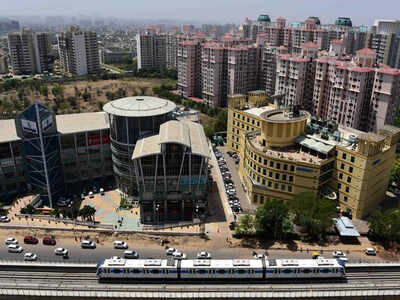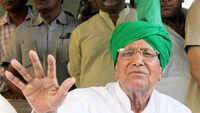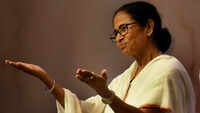
By Hamsini Shivakumar
All professionals in the field of branding and communication would concur that a power brand is a cultural symbol or representation, which can evoke deeper feelings and attachments from its users and from audiences who come into contact with it. The world’s major cities are such power brands.
Think of Paris, London and New York, and a plethora of images and emotions are instantly evoked. These cities have been photographed heavily by tourists and professional photographers. Their architectural landmarks are known to millions around the world, including those who have never set foot there. Their streets and culture have been captured in countless movies and hence are familiar not just to residents but worldwide audiences. The black cabs of London and yellow taxis of New York are visual icons. Great authors have set their stories in those cities and made their landscapes famous.
In India, the old metros are such power brands: Mumbai, Delhi, Kolkata and Chennai. Mumbai and Delhi, in particular, have been captured in countless photographs as well as movie scenes.
Which brings me to Gurugram, which has been home for 12 years now. While being attached to Delhi as part of NCR, Gurugram is a city in its own right, variously described as Millennium City and a corporate hub. New Gurugram is consciously modelled on cities such as Singapore and Dubai, in its design and way of life, with glitzy steel-and-glass downtown work areas (Cyber City), malls and pedestrianised zones (Cyber Hub), and residences in condominiums and gated communities.
A huge segment of the city’s population is not local Haryanvis but professionals and workers from various parts of India, or those who have moved from Delhi. Many are also transitory, coming to Gurugram to work for a few years, before moving back to the cities they came from, or to which their professional ambitions take them.
Who, then, loves Gurugram? What images and feelings does Gurugram evoke? What does Gurugram symbolise? If it’s just the name of a township, then the attachments are only to friends made while living there, and to a few places in and around one’s residence. But if it is to become a symbol of new aspirations, and dreams of global living (as the names of the various condos would suggest) in a way that evokes pride and not derision, then what is Gurugram defined by? Enough critical commentary has been written on Gurugram by journalists, choosing to see the lifestyle of Gurugram residents as pretentious and wannabe rather than as something deeper and more meaningful.
To love Gurugram, it should all start with the question: what should a Gurugram resident be called? How should we identify ourselves? What’s our shared identity (especially now that the city has been officially renamed Gurugram)? Are we Gurugram-ers? Or Gurugrammers? Or just Gurus? Or Gurugram-kars? Or indeed, Gurugram-ites? It’s difficult to turn the city into a power brand if the residents don’t know what to call themselves, if there is no label that falls easily off the tongue (like Parisians and Londoners, or Mumbaikars and Delhiites).
So, what parts of the city do we, its residents, feel proud of and happy to show to friends, family and other visitors? Do we love showing off Cyber Hub, Galleria market and Kingdom of Dreams? Or just the gated communities we live in? Which parts of the city would photographers, filmmakers, writers and other creative folk living in Gurugram want to romance through their art and craft? Or is it that the city’s lifestyle of middle and elite class aspiration lacks the sheer tension and human churn that cities like Mumbai and old Delhi have, which inspire writers to romanticise them? As Gurugram grows, will its various areas develop a distinctive enough character to be labelled as neighbourhoods?
Right now, sadly, the city’s decision-makers seem to be quite happy to have it live up to its ‘corporate city’ moniker by getting sponsors for Rapid Metro and turning each of its stations into a corporate billboard. And Gurugram’s resident professionals are all happy to stay here for the convenience and comfort of condo-living and the milling crowds that are a central feature of India’s old and big cities.
But, are we willing to love Gurugram? And showcase that love?
(The author is Director, Leapfrog Strategy Consulting)
All professionals in the field of branding and communication would concur that a power brand is a cultural symbol or representation, which can evoke deeper feelings and attachments from its users and from audiences who come into contact with it. The world’s major cities are such power brands.
Think of Paris, London and New York, and a plethora of images and emotions are instantly evoked. These cities have been photographed heavily by tourists and professional photographers. Their architectural landmarks are known to millions around the world, including those who have never set foot there. Their streets and culture have been captured in countless movies and hence are familiar not just to residents but worldwide audiences. The black cabs of London and yellow taxis of New York are visual icons. Great authors have set their stories in those cities and made their landscapes famous.
In India, the old metros are such power brands: Mumbai, Delhi, Kolkata and Chennai. Mumbai and Delhi, in particular, have been captured in countless photographs as well as movie scenes.
Which brings me to Gurugram, which has been home for 12 years now. While being attached to Delhi as part of NCR, Gurugram is a city in its own right, variously described as Millennium City and a corporate hub. New Gurugram is consciously modelled on cities such as Singapore and Dubai, in its design and way of life, with glitzy steel-and-glass downtown work areas (Cyber City), malls and pedestrianised zones (Cyber Hub), and residences in condominiums and gated communities.
A huge segment of the city’s population is not local Haryanvis but professionals and workers from various parts of India, or those who have moved from Delhi. Many are also transitory, coming to Gurugram to work for a few years, before moving back to the cities they came from, or to which their professional ambitions take them.
Who, then, loves Gurugram? What images and feelings does Gurugram evoke? What does Gurugram symbolise? If it’s just the name of a township, then the attachments are only to friends made while living there, and to a few places in and around one’s residence. But if it is to become a symbol of new aspirations, and dreams of global living (as the names of the various condos would suggest) in a way that evokes pride and not derision, then what is Gurugram defined by? Enough critical commentary has been written on Gurugram by journalists, choosing to see the lifestyle of Gurugram residents as pretentious and wannabe rather than as something deeper and more meaningful.
To love Gurugram, it should all start with the question: what should a Gurugram resident be called? How should we identify ourselves? What’s our shared identity (especially now that the city has been officially renamed Gurugram)? Are we Gurugram-ers? Or Gurugrammers? Or just Gurus? Or Gurugram-kars? Or indeed, Gurugram-ites? It’s difficult to turn the city into a power brand if the residents don’t know what to call themselves, if there is no label that falls easily off the tongue (like Parisians and Londoners, or Mumbaikars and Delhiites).
So, what parts of the city do we, its residents, feel proud of and happy to show to friends, family and other visitors? Do we love showing off Cyber Hub, Galleria market and Kingdom of Dreams? Or just the gated communities we live in? Which parts of the city would photographers, filmmakers, writers and other creative folk living in Gurugram want to romance through their art and craft? Or is it that the city’s lifestyle of middle and elite class aspiration lacks the sheer tension and human churn that cities like Mumbai and old Delhi have, which inspire writers to romanticise them? As Gurugram grows, will its various areas develop a distinctive enough character to be labelled as neighbourhoods?
Right now, sadly, the city’s decision-makers seem to be quite happy to have it live up to its ‘corporate city’ moniker by getting sponsors for Rapid Metro and turning each of its stations into a corporate billboard. And Gurugram’s resident professionals are all happy to stay here for the convenience and comfort of condo-living and the milling crowds that are a central feature of India’s old and big cities.
But, are we willing to love Gurugram? And showcase that love?
(The author is Director, Leapfrog Strategy Consulting)
World Cup 2019
Trending Topics
LATEST VIDEOS
More from TOI
Navbharat Times
Featured Today in Travel
Quick Links
Lok Sabha Election Schedule 2019Lok Sabha Election NewsDelhi Capitals teamMI team 2019Rajasthan Royals 2019RCB team 2019Maharashtra Lok Sabha ConstituenciesBJP Candidate ListBJP List 2019 TamilnaduShiv Sena List 2019AP BJP List 2019Mamata BanerjeeBJP List 2019 MaharashtraPriyanka GandhiBJP List 2019 KarnatakaAMMK Candidate List 2019BJP List 2019 WBLok Sabha Elections in Tamil NaduBSP List 2019 UPNews in TamilLok Sabha Poll 2019Satta Matka 2018PM ModiMahagathbandhanNagpur BJP Candidate ListChandrababu NaiduTamil Nadu ElectionsUrmila MatondkarNews in TeluguMadras High CourtTejashwi YadavArvind KejriwalTejasvi SuryaPawan KalyanArvind KejriwalYogi AdityanathJaya PradaSatta King 2019Srinagar encounter
Get the app







